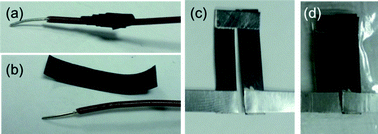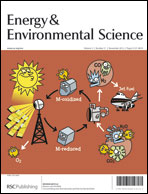This report demonstrates an exciting new paradigm for thermoelectric energy conversion with both n- and p-type organic materials that possess mechanical flexibility, simple fabrication processes, and stability in air. In order to synthesize n-type samples with membranes and papers, carbon nanotubes were doped with both polyethyleneimine (PEI) and sodium borohydride (NaBH4), showing excellent n-type characteristics with thermopower values as large as −80 μV K−1. Thermoelectric modules made of both n- and p-type composites were fabricated to demonstrate thermoelectric voltage and power generation with one, two, and three p–n couples connected in series. The testing modules produced ∼6 mV thermoelectric voltage, with ∼25 nW generated power upon application of ∼22 °C temperature gradients. These promising results show that further work with many junctions connected in series would result in scalable organic p–n couple modules, which can generate power from temperature gradients or provide cooling for various electronic devices.

You have access to this article
 Please wait while we load your content...
Something went wrong. Try again?
Please wait while we load your content...
Something went wrong. Try again?


 Please wait while we load your content...
Please wait while we load your content...